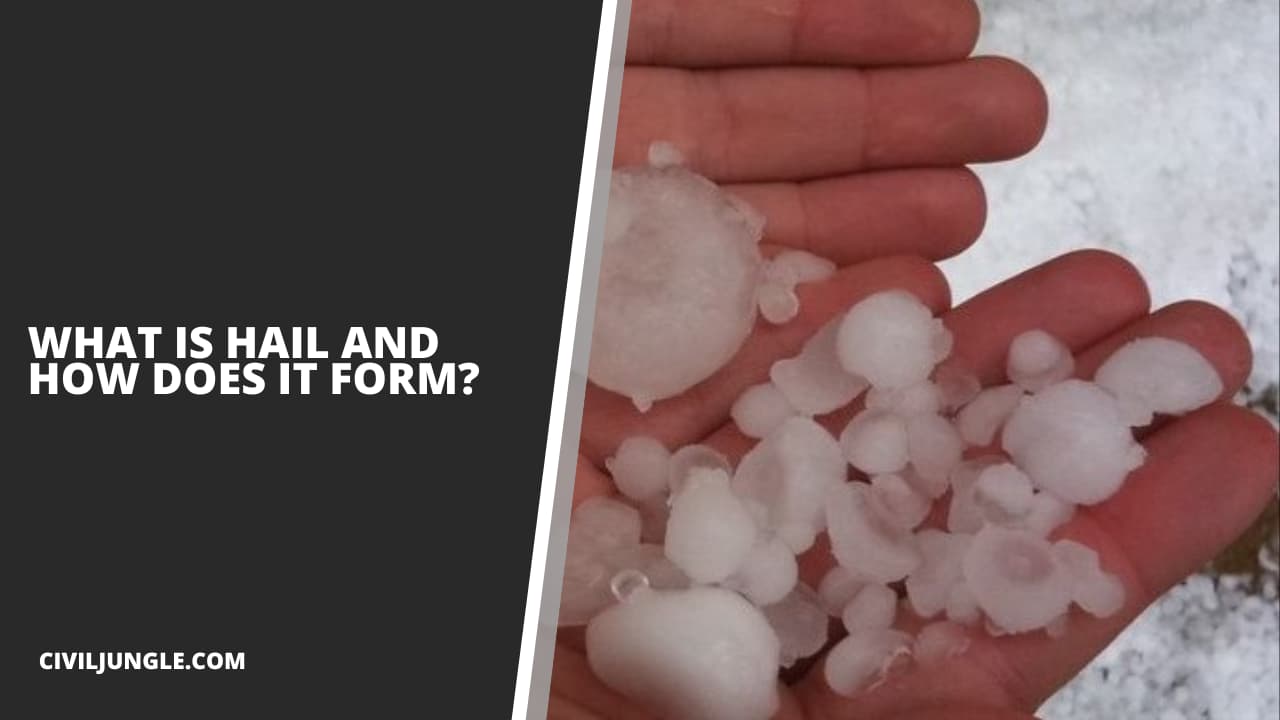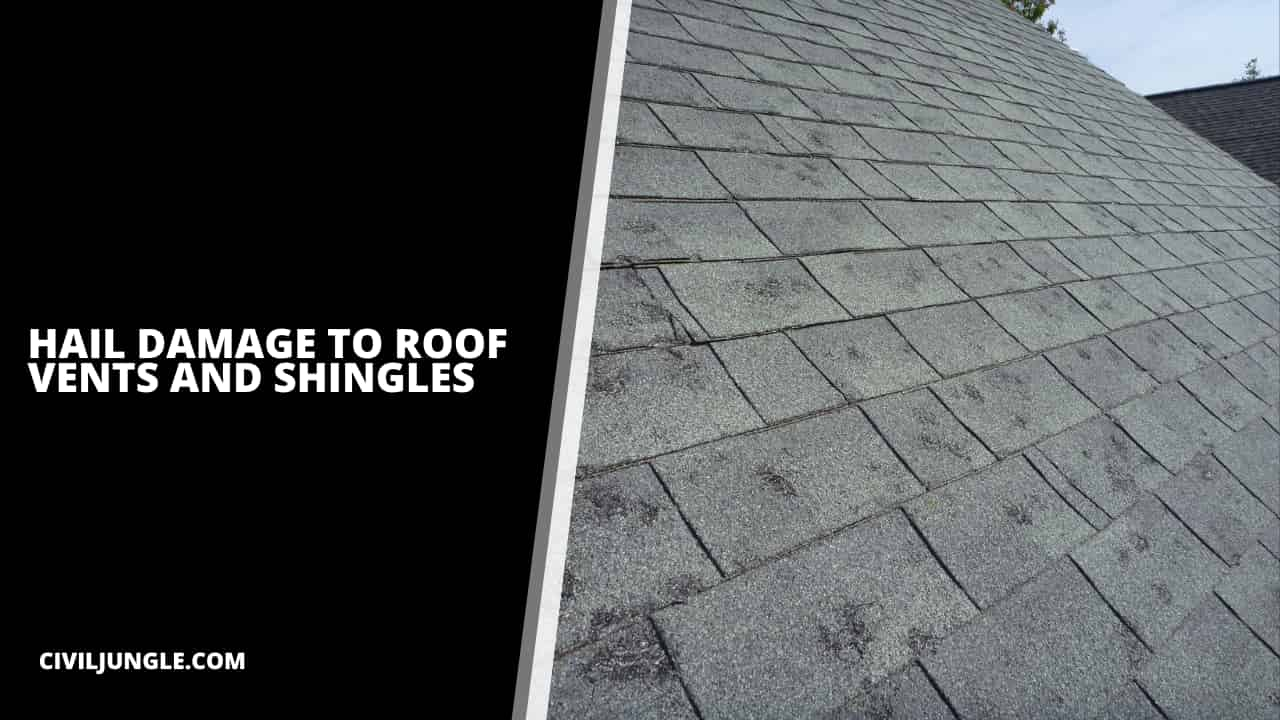
How to Spot Hail Damage on Roof?

Generally, when assessing hail damage metal roof vulnerabilities, it’s evident that hail damage can have a significant impact on roof covering materials and other properties. Many homeowners often wonder, ‘how do you know if your roof has hail damage?‘ or ‘what does hail damage look like on a roof?
A hail storm can be very destructive and dangerous. So, there are some factors to determine the impact of hailstorm damages, which affects the different types of shingles and roofing materials, those are-
1. Wind
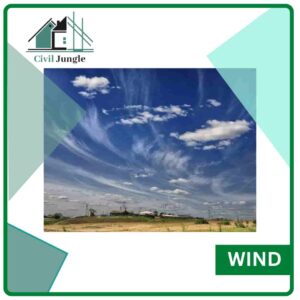
In the time of storm, the wind speed varies continuously; so, the direction and speed of wind are continuously changing. This changing direction of Hail affects the location of roof shingles and other roofing materials.
2. Size and Density
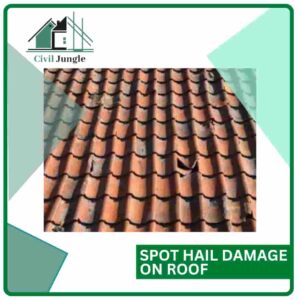
The intensity of the storm is directly proportional to the size and density of the hail; so, if the size of the hailstorm is more, then the damage is also serious. Hail storms may be very small, or sometimes it is huge. Hailstorms carry hailstones that do not have smooth edges; so, the impact of those hailstones creates a deep impact on your roof shingles or roofing materials.
3. Building materials
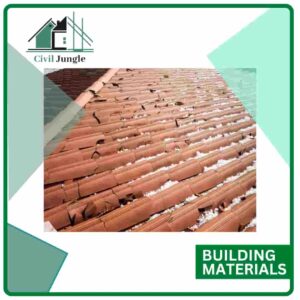
Building materials also play an important role. Different types of building materials absorb different hail impacts. Due to Hail, dings in gutters, aluminum siding, asphalt shingles have happened. Wooden shingles or vinyl siding are also badly affected due to Hail because they are not as strong as aluminum.
Hailstones are very dangerous, and small hailstones have enough capacity to damage a roof; so, the longevity of the roof could affect this effect. Hailstones do not have smooth edges, and they are rough and sharp enough to damage a roofing material easily.
4. Barriers:
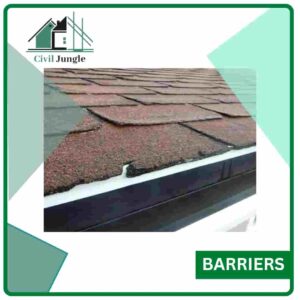
Barriers can protect your buildings or your property from dangerous hail damage. So, barriers like fences, homes near your house, natural barriers like tree covers, landscaping, etc. It can protect you from the hail damage effect.
What Is Hail and How Does It Form?
In simple words, Hail can be defined as a crystallized piece of snow. Many a time, hail is confused with the ice pellets, but that’s often not the case. Ice pallets are generally solid precipitation of particles less than 5mm, which are generally spherical and circular but rarely conical in shape.
Ice pallets are generally formed as the raindrops fall through the cold air. The raindrops, as they fall through cold air and clouds, soon lose their temperature and come in Sub-zero temperature.
As they come to Subzero temperature, a thin layer of ice is formed, converting the liquid raindrops. Many a time, while falling through the air, a fall in temperature might be witnessed, thus again converting the ice pallets into raindrops.
The size of ice pallets is far smaller than the size of Hail, so it does not damage any roofs while falling. Many times, while falling through, the thin layer of ice is again broken and again reverts back to its original form, that is, liquid rainwater. Thus it can be said that Hail is generally formed keeping a lot of ice pallets together.
The formation of Hail can be generally witnessed in cold regions. In those regions, and in all other regions as well, the air temperature rises as the height gets increased. Thus the temperature of the air at a higher place is larger than the temperature of the air at a lower place, keeping the geotechnical coordinates the same.
As per the concept of transpiration, the warmer air gets upward, while the colder air gets downward. So the process starts from the evaporation of water due to continuous heat. As the water evaporates from the surface sources, it gets stored up in the lower layer of air, which is, in fact, warmer.
Due to the up drift of warmer air(meaning warmer air gets higher), the rainwater stored in the lower layer of air gets upwards. As the temperature of the upper air is much below the lower air, the raindrops generally fall below Sub zero temperature and form thin ice.
As the weight of the ice is greater than the raindrop itself, it falls in the lower layer of air. As it falls in the lower layer of air, it generally melts into raindrops again. As the lower layer of air also consists of moisture; thus the raindrops collect more moisture and turn slightly bigger.
Due to the up drift of air, the raindrops again go into the upper layer of air, falling at a Subzero temperature and again forming ice pallets, which is slightly bigger than before. As this cycle goes on continuously, the ice pallets become bigger and bigger. Through this cycle, a time comes when the layer of ice cannot hold the weight of the ice; thus, it falls to the ground.
Hails are generally the pieces of solidified raindrops formed through the cycle of transpiration and evaporation and have a size bigger than 5 millimeters.
6 Signs of Hail Damage on Roof

One of the common questions homeowners have is about the signs of hail damage on their roofs. Hail can damage different roofing materials in varying degrees. For instance, the effects on wood, asphalt, metal, and slate can differ. Recognizing hail spatter marks or understanding how to tell if your roof has hail damage is crucial.
These products are getting damaged differently by the hailstorm.
- Hailstorm is the cause of huge damages on wooden shingles by which the shingles get split and sometimes broken.
- Naturally, split shingles have sharp edges and corners. Split in the shingle has been determined in the middle, but no damages at the edges of the shingles.
- Metal shingles get cracked, crushed, or anything other can happen with metal shingles due to hailstorms. The metal coating is also removed, and scouring is observed.
- Slate shingles are getting cracked, totally broken in maximum times, and holes are also created in this type of shingles.
- In asphalt shingles, granules get removed and become shiny in nature. It is also very harmful to the roof itself also. The colors of those shingles also changed.
- Damage signs are also visible in the asphalt shingles due to hail storms.
Hail Damage to Roof Vents and Shingles
Roof vents are almost constructed in every house, and it helps to circulate the airflow in the building and provide a way to enter the sunlight in the building. Roof vents are generally made with glass, so, due to hailstorms, those glasses are totally damaged, like cracked or totally broken. This creates a huge loss for the owner.
Shingles are also damaged by hail storms. The damages in shingles are- Hail created a huge impact on the asphalt and composition shingles and turned it into the black in color. Due to Hail, granules in asphalt get removed and become shiny in nature.
It is also very harmful to the roof itself also. Slate shingles are getting cracked, totally broken in maximum times. Hailstorm is very dangerous for the slate shingles.
What Does Hail Damage Look Like on Shingles Roof?
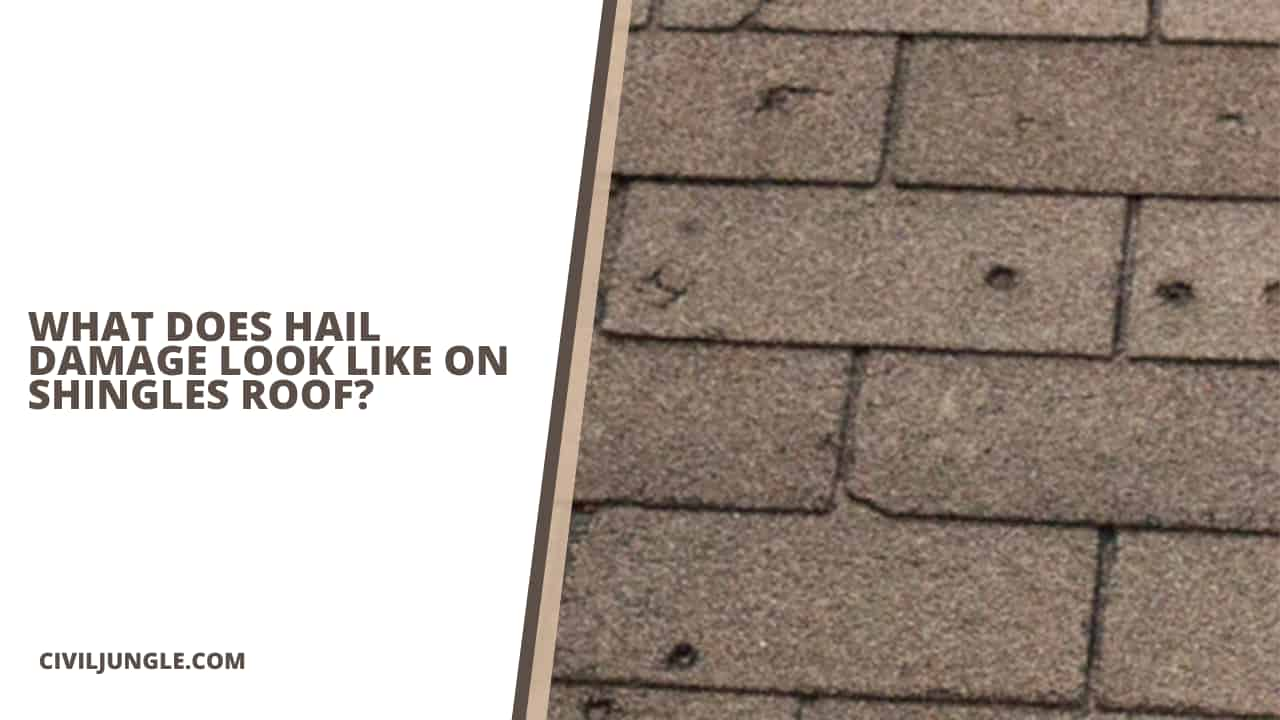
Hail damage creates different damage impacts in roof shingles. Naturally, roof shingles are made with slate, metal, wooden, etc. So, the damages on various roof shingles are.
1. Wood Shingles Damage
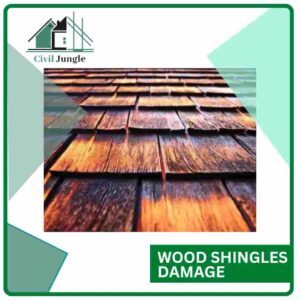
Wood shingles are easily damaged by hailstorms because they are very weak to resist that kind of storm.
Some effects of hail damage on wood shingles are.
- The wooden shingles will split, which are orange or brown in color.
- Hailstorm creates random damages on wooden shingles.
- Generally, split shingles have sharp edges and corners. Split in the shingle has been determined in the middle, but no damages at the edges of the shingles.
- Damage marks are seen along with the splits, and it also creates impact damages on the roof shingles or roofing materials.
2. Asphalt and Composite Shingles Damage
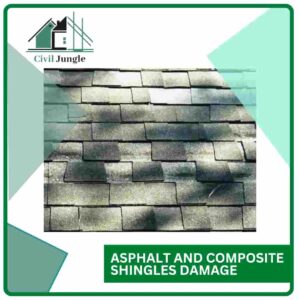
Generally, asphalt and composite shingles are much harder and stronger than wooden shingles, they can even resist the hailstorm damage more perfectly and accurately, but there is also some damages are observed in asphalt or composition shingles, those are-
Hail created a huge impact on the asphalt and composition shingles and turned it into black in color. Random damage patterns are visible in the asphalt shingles after the Hail.
Due to Hail, granules in asphalt get removed and become shiny in nature. It is also very harmful to the roof itself also. Sometimes, Hail does not hit too much harder; it hits smoothly and creates less impact on the roof shingles like asphalt or composition shingles.
3 Metal Shingles Damage
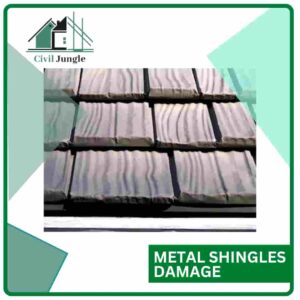
Due to hailstorm, the upper coating of the metal shingles is removed; so, it shows a scouring effect. The roof is pelted because of Hail, and the damage is measured by the speed of air of Hail. The material gets cracked, crushed, or anything other can happen with metal shingles due to hailstorms.
4. Slate Shingles Damage
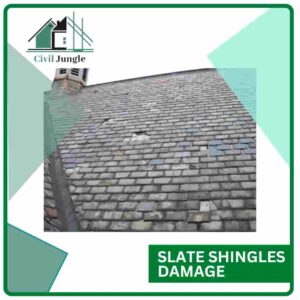
By the hailstorm, the slate shingles are getting cracked, totally broken in maximum times. Hailstorm is very dangerous for the slate shingles. Due to Hail, holes are created in the slate shingles, and it is not usable in maximum time.
Metal Roof Hail Damage

When it comes to hail damage on metal roof shingles, even though they are among the tougher roofing materials, they are not immune to the effects of hail storms. It’s essential to identify the signs of hail damage and know ‘how do I know if my roof has hail damage?
There are several types of damage that can happen in the metal roof, those are-
- Denting may happen due to hail storm; so, a portion of the panel is dented from the roof, and due to this aesthetic issue will appear, there are no chances of failing by this reason. Someone needs to fix and repair those portions, and the roof is totally ready to repair.
- Due to a hail storm, some random sharp-edged particles hit the metal roof; so, for this reason, a leak is observed in the roof. Puncturing in the metal roof is common after Hail.
- Sometimes, metal shingles are also broken due to this hail storm. It is very dangerous, and it needs proper repair works and maintenance for further use.
What About Hail Spatter?

On the roof, shingles, or other materials, there are painted components or other materials like oxidation materials, dirt, leaves, algae, and grime stored. A common aftermath of hailstorms is hail spatter marks on siding and other surfaces. There is a temporary marking is happens after a hail storm, which is termed as Hail spatter.
Hail spatter may damage the roof shingles, or it may not damage the roof shingles; it totally depends on the hailstones. Hail spatter is a very important thing because it removes the dirt, grime, and other materials & leaves a mark on roof shingles by which we can easily detect the damages on the roof and the size of hailstones, the direction of hailstone and speed of hailstones.
In soft metals, we can easily detect the hail storm damages and the density of hailstones. So, Hail spatter can damage your roof shingles, but it will also help a lot more; it cleans the roof shingles from algae, dirt, debris, grime, etc. And by Hail spatter, you can easily detect the hailstones’ density.
What Size Hail Will Damage a Roof?
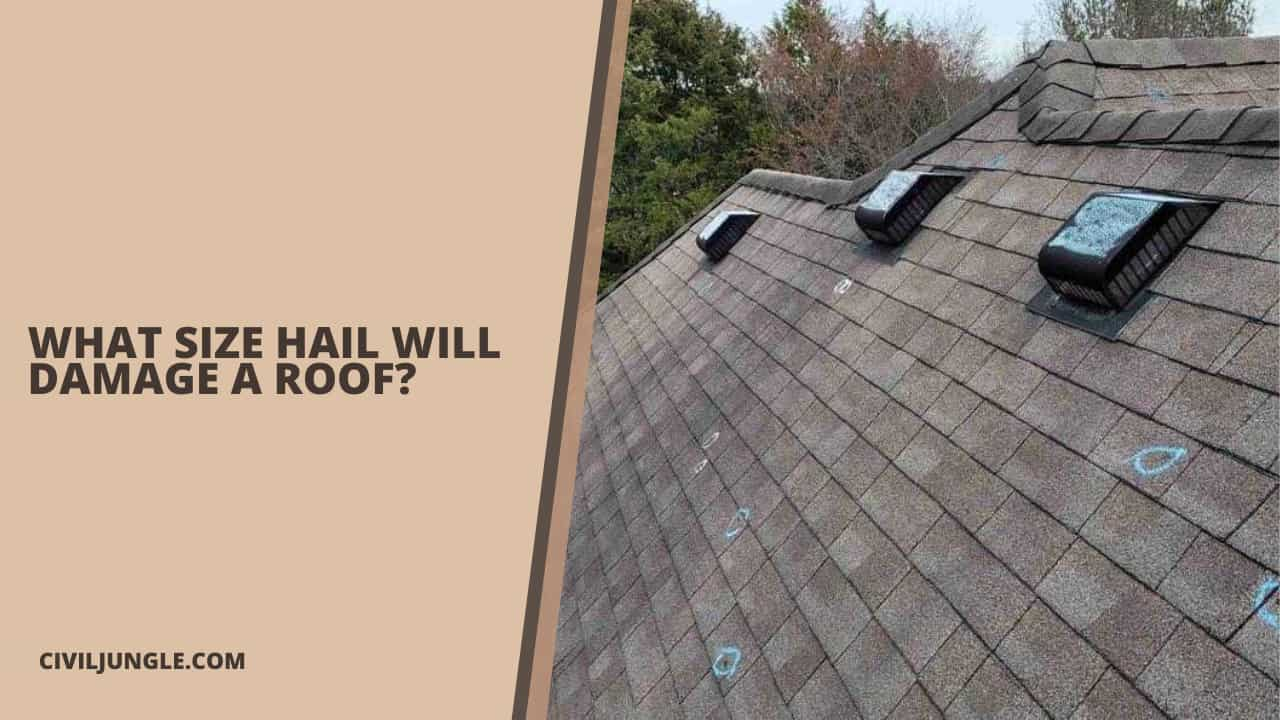
A frequent query among homeowners is, ‘how do you know if your roof has hail damage?‘ While hail can cause significant damage to roofs, often the extent of damage is less if the hailstones are small, but if the sizes of hailstones are bigger in nature, then it may cause huge damage and a major loss for your roof.
It also costs too much money for repairing purposes. There are some sizes hail causes roof damages; they are different in size, and different damage property is observed and also create a different impact on your roof.
1. ¼-inch Hail
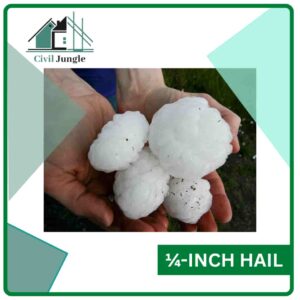
This is the first size of Hail which is widely known as pea-sized Hail. In this type of storm, a mild hailstorm can produce this type of Hail, and it stays near for about a few minutes with a steady rainfall. New roofs are not damaged by this type of hail size, but if your roof is a little bit older, then your roof is getting damaged by this type of hail storm.
2. ½-inch Hail
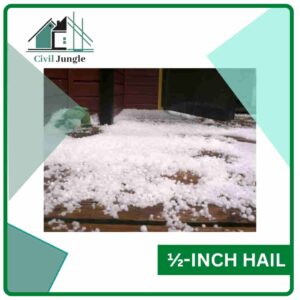
This is the second size of Hail which is widely known as marble-sized hail. This type of Hail does not damage your roof directly because wind goes to the upper portion atmosphere, becomes snow, and falls down to the earth due to gravity. When the extreme wind is blown, then this type of Hail can create damages to your roof, and then the size of the Hail becomes quarter-inch-sized.
3. ¾-inch to 1-inch Hail
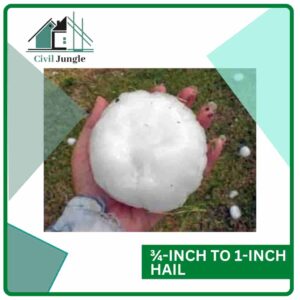
This is also another type of Hail which is widely known as a dime to quarter size hail. If the size of hailstones is greater than ½ inch, then you should immediately call a roof inspector to inspect the roof.
This type of hail size can create a crack in your roof, which is very dangerous, and you should call a roofing contractor. You should also hire an insuring agent who prepares all the policies and talk with your roofing contractor about the dealing of damage.
4. 1-inch to 4-inch hail
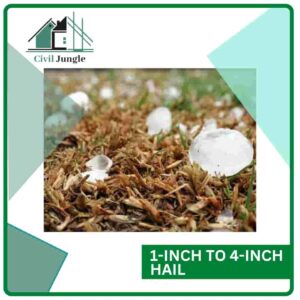
This is the final size of Hail which is also known as gold ball-sized Hail. This is the uncommon size of Hail which can create huge damage on your roof, home, car, etc. If this type of Hail is done, then there is damage surely. In this type of situation, you should hire an insurance agent and a roofing contractor to inspect the roof.
After that, the roofing contractor will inspect your roof in detail and find out the damages on your roof and the portion where hail hits, and then start all the necessary repairing works. This process is also a very cost-effective process; so, you need to calm and find out the best and professional contractor for your roof repairing purpose.
What Does Hail Damage Do to a Roof?
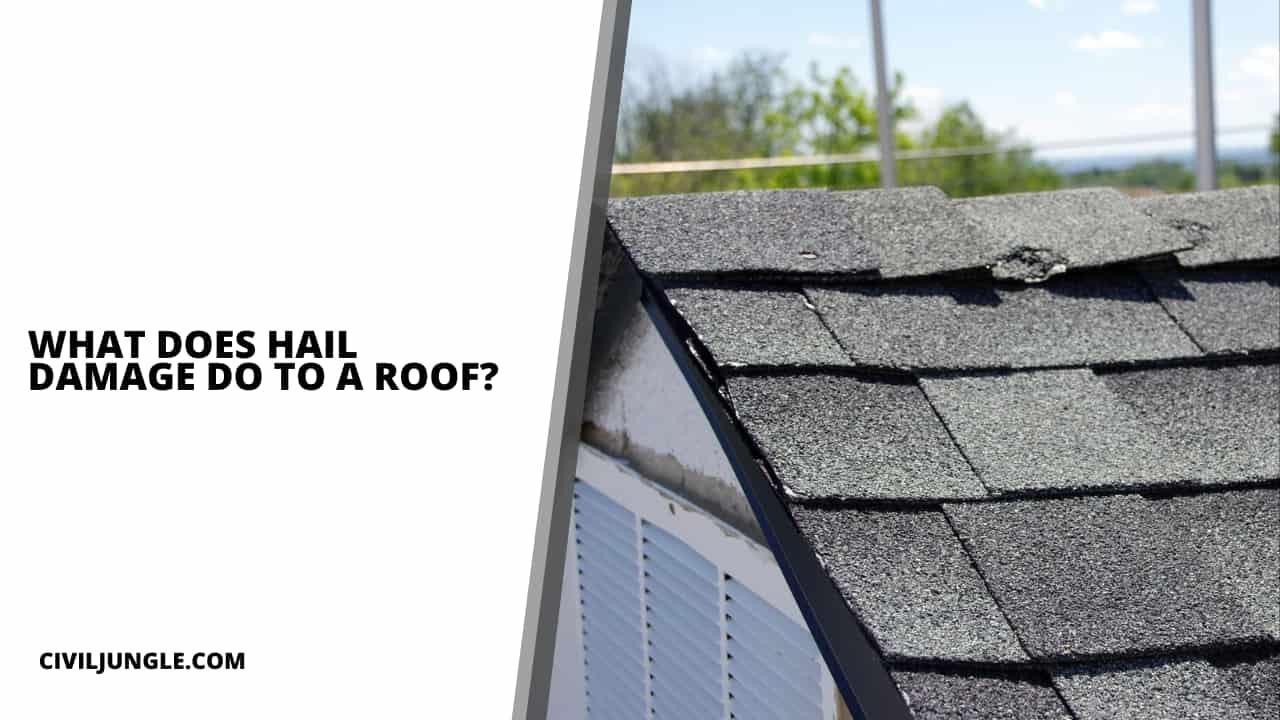
Hail damage creates different impacts in different types of materials, like the impact on asphalt and composite shingles are different than wooden shingles. Generally, shingles of the roof react differently when they are struck by Hail. So, it is mandatory and important to know about the types and intensity of damage to perfectly detect the damages for restoration and repair of roof shingles.
What Do I Do If I Think I Have Hail Damage?

If you suspect hail damage to metal roof or any other type, and notice that only one or two roof shingles or shakes are punctured or split, they can be removed or replaced.
- When you see or discover the failed damage on your wooden roof, at first, we have to determine how much damage occurs there.
- For this job you can hire a local contractor, he or she can easily handle this problem.
- If you inspect your roof and find that most of the shingles or shakes are damaged, then you have to replace the whole roof.
Frequently Asked Questions (FAQ)
How Do I Know If My Roof Has Hail Damage?
You can identify hail damage on your roof by looking for common signs such as dents, cracks, and splits on shingles. You may also notice missing granules on asphalt shingles, cracks in slate shingles, or dented and punctured metal shingles.
What Does Hail Damage Look Like on a Roof?
Hail damage varies depending on the roofing material. Wood shingles may split, asphalt shingles may lose granules and appear shiny, metal shingles may dent or puncture, and slate shingles may crack or break entirely.
What Size Hail Will Damage a Roof?
Hailstones as small as ¼ inch can potentially cause damage, especially to older roofs. Larger hailstones, such as those ranging from ¾ inch to 4 inches, can cause significant damage and require professional inspection and repair.
What Are the Signs of Hail Damage on Different Types of Shingles?
- Wood Shingles: Splits with sharp edges and corners, impact marks.
- Asphalt and Composite Shingles: Black marks, missing granules, random damage patterns.
- Metal Shingles: Dents, punctures, removed coating, scouring effects.
- Slate Shingles: Cracks, holes, complete breakage.
Can Metal Roofs Be Damaged by Hail?
Yes, metal roofs can suffer from dents, punctures, and aesthetic damage due to hail. Despite being tougher, they are not immune to hailstorms.
What Is Hail Spatter and How Does It Affect the Roof?
Hail spatter refers to the temporary markings left by hailstones as they hit surfaces. It can remove dirt and grime, leaving behind clean spots that indicate the size and direction of the hailstones, which helps in assessing the damage.
What Should I Do If I Think I Have Hail Damage on My Roof?
If you suspect hail damage, inspect your roof for visible signs of damage. Contact a professional roofing contractor for a thorough inspection and to assess the extent of the damage. Hiring an insurance agent to evaluate your coverage and assist with claims can also be beneficial.
How Does Hail Form and Why Is It Damaging?
Hail forms when updrafts in thunderstorms carry raindrops into extremely cold areas of the atmosphere, causing them to freeze into ice pellets. These pellets grow larger as they are repeatedly lifted and dropped by updrafts until they fall to the ground. Their size and density can cause significant damage to roofing materials.
Are There Any Preventative Measures to Protect My Roof from Hail Damage?
Installing impact-resistant roofing materials, such as metal or high-quality asphalt shingles, can help minimize damage. Additionally, ensuring proper maintenance and trimming overhanging tree branches can reduce the risk of hail damage.
When Should I Call a Professional for Hail Damage Inspection?
You should call a professional roofing contractor if you notice any signs of damage, such as missing granules, cracks, or splits in your shingles, or if you experienced a hailstorm with hailstones larger than ½ inch. A professional inspection can help determine the extent of the damage and necessary repairs.

